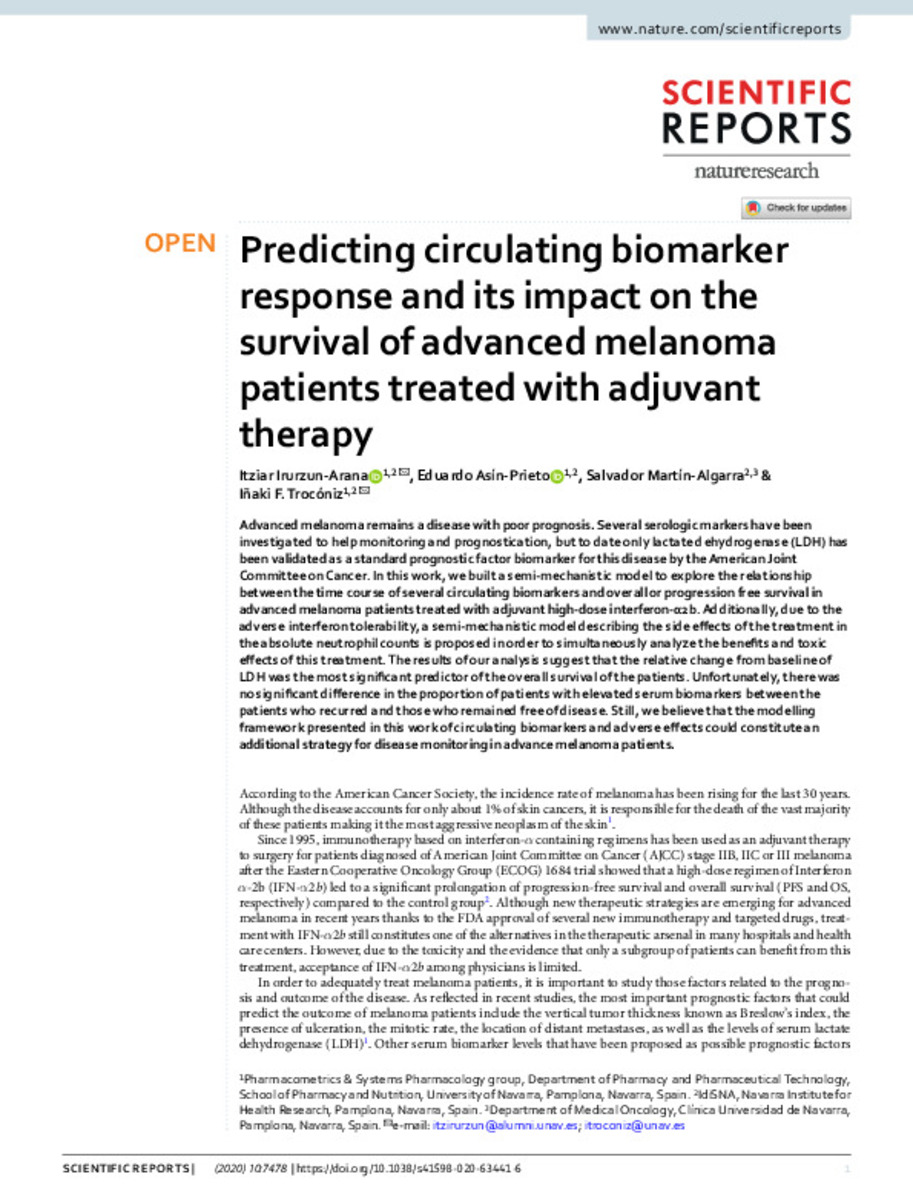Predicting circulating biomarker response and its impact on the survival of advanced melanoma patients treated with adjuvant therapy
Keywords:
Advanced melanoma
Poor prognosis
Serologic markers
Lactate dehydrogenase (LDH)
Publisher:
Springer Nature
Note:
This article is licensed under a Creative Commons Attribution 4.0 International
License, which permits use, sharing, adaptation, distribution and reproduction in any medium or
format, as long as you give appropriate credit to the original author(s) and the source, provide a link to the Creative Commons license, and indicate if changes were made. Te images or other third party material in this
article are included in the article’s Creative Commons license, unless indicated otherwise in a credit line to the
material. If material is not included in the article’s Creative Commons license and your intended use is not permitted by statutory regulation or exceeds the permitted use, you will need to obtain permission directly from the
copyright holder. To view a copy of this license, visit http://creativecommons.org/licenses/by/4.0/.
Citation:
Irurzun-Arana, I. (Itziar); Asín-Prieto, E. (Eduardo); Martin-Algarra, S. (Salvador); et al. "Predicting circulating biomarker response and its impact on the survival of advanced melanoma patients treated with adjuvant therapy". Scientific reports. 10 (1), 2020, 7478
Statistics and impact
0 citas en

0 citas en

Items in Dadun are protected by copyright, with all rights reserved, unless otherwise indicated.







